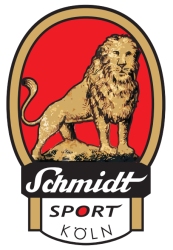 1969 Schmidt
1969 Schmidt
serial number LS 0012 7 69; Reynolds 531 butted frame tubes; Reynolds 531 forks; Nervex bottom bracket; seat tube 56cm ctc; top tube 56cm ctc
Components: Stronglight 49D 170mm 'Deposee' crankarms;
TA chainrings [48-30]; Suntour five cog freewheel [13-30; 26 - 97 gear inches]; SRAM chain;
Campagnolo bottom bracket cups (spiral opening; French thread 35x1); Gipiemme Sprint Strada + 3 0 axle; Campagnolo Rally rear derailleur;
Campagnolo Gran Sport front derailleur; Campagnolo shifters;
Rear wheel: Weinmann 36 hole LP18 rim, BBC Wheelmaster Aq-1000 hub (125 OLN); Front wheel:
Shimano 600 hub with Mavic Reflex SUP rim [622x13 6106]; Campagnolo Gran Sport pedals; Christophe toeclips and straps;
Weinmann Deluxe 730 brakeset; Campagnolo headset (English thread); GB 90mm stem and Lauterwasser bend handlebars; 27.2 mm straight alloy seatpost;
Velo Orange leather saddle; Ideale No. 3 saddle clamp
Weight: 24.1 pounds
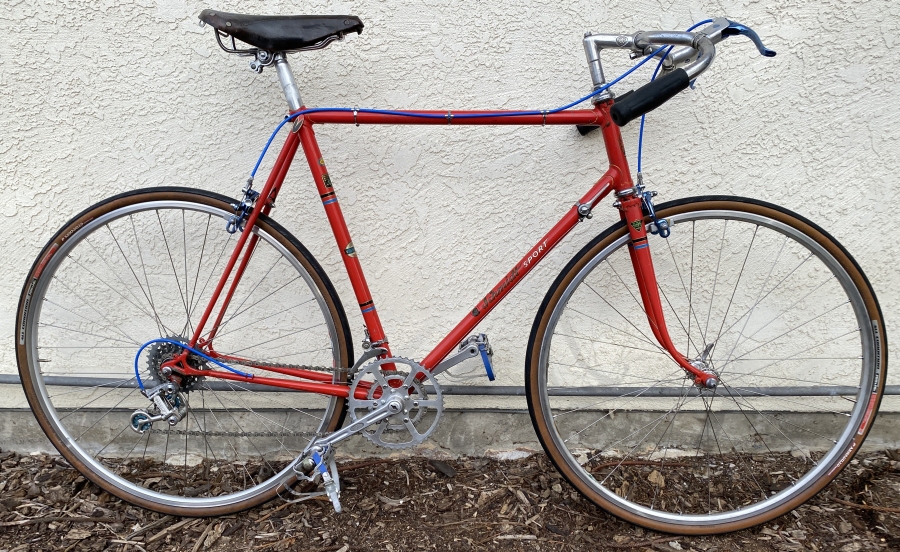
link to larger photo
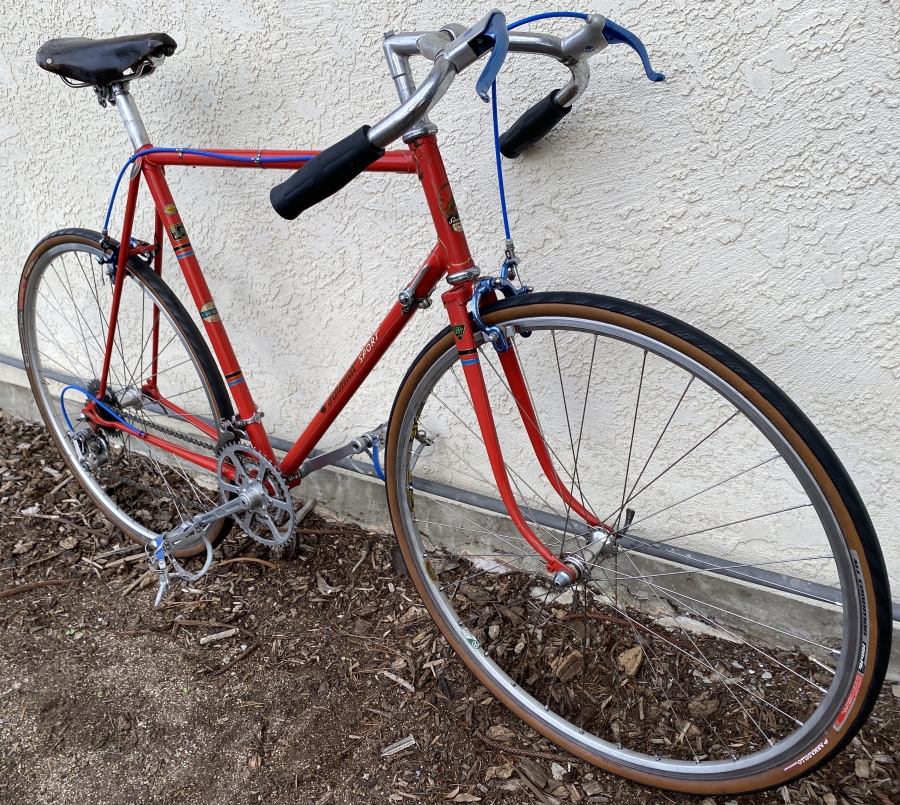
link to larger photo
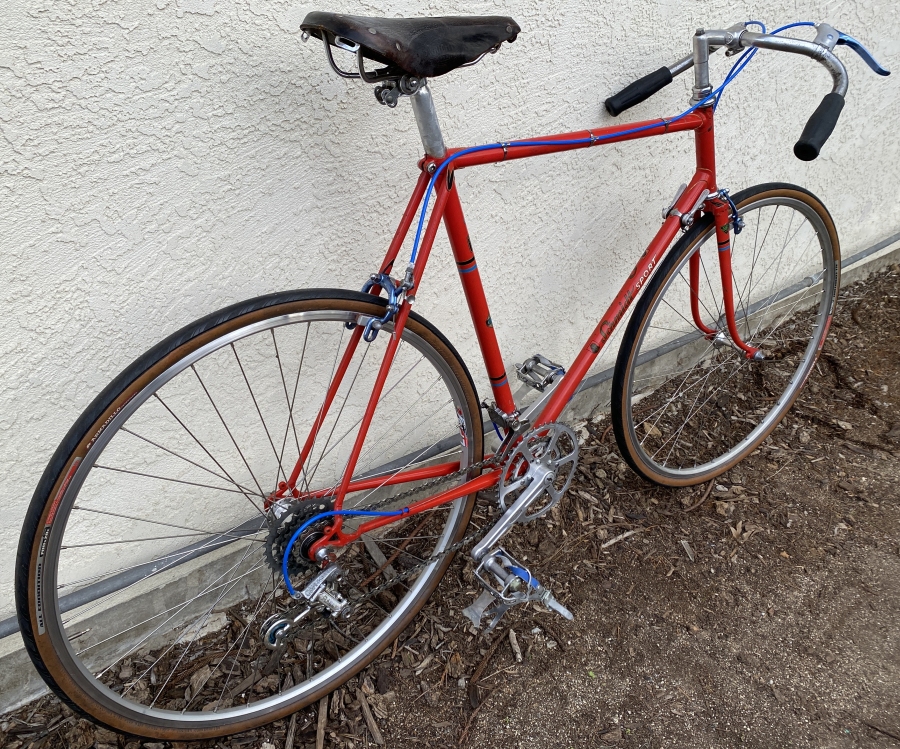
link to larger photo
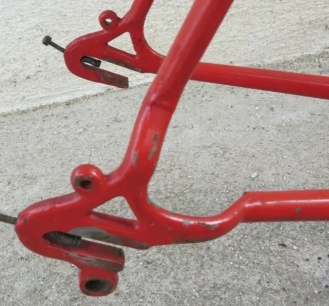 Leonhard Schmidt:
Leo Schmidt was a builder located at Cranachstrasse 48, 5000 Koln 60/Nippes (Koln / Cologne), Germany. He developed and patented an offset
right rear dropout to avoid rear wheel dish and accomodate larger freewheels.
Leonhard Schmidt:
Leo Schmidt was a builder located at Cranachstrasse 48, 5000 Koln 60/Nippes (Koln / Cologne), Germany. He developed and patented an offset
right rear dropout to avoid rear wheel dish and accomodate larger freewheels.
Schmidt also developed the use of smaller diameter front wheels in bikes.
xv61: "The "one-eyed" Leo Schmidt was an active and successful cyclist until old age. Before he opened a bicycle repair shop, he had an auto repair workshop in the workshop street in Cologne Nippes. His frames were later painted in this workshop. He often got his private frames from [Rudolf Fauss (RUFA)] until he had the idea with the dropout. He had been building his bikes since the late 1960s, and in the early 1970s he moved his business to Cranachstrasse. Later he moved his shop to Liebigstrasse. His shop and frame construction continued after his death in the mid-1980s by Hilarius Adam. Adam also adopted the lion logo typical of Schmidt and the lettering on the frame. [Schmidt] had his bizarre dropout patented, which enables symmetrical spokes and the use of larger freewheels. The purpose of the dropout was to reduce the loads on the rear wheel by [high spoke tensioning] on one side and thus preventing spoke breaks. The disadvantage of his solution was that the wheels were not compatible with the then common [rear wheels] (a change in the race always required the same design), and a wider bottom bracket axle (approx. 10-15mm) was needed to make the chain track [properly]. ... The main advantage was the symmetrical spoke tension. At that time the 6-cog freewheels became available, [and] the [spoke] tension became more and more uneven. Olympic champion [Fredy] Schmidtke ... was in the youth class, also on the Schmidt bike with a bent dropout. Many successful German cyclists preferred the frames soldered by Mister Schmidt. Leo Schmidt also practiced cycling into old age, and also participated in senior races."
From:
Internet Archive
and
Rennrad News
 1969 Schmidt
1969 Schmidt


 Leonhard Schmidt:
Leo Schmidt was a builder located at Cranachstrasse 48, 5000 Koln 60/Nippes (Koln / Cologne), Germany. He developed and patented an offset
right rear dropout to avoid rear wheel dish and accomodate larger freewheels.
Leonhard Schmidt:
Leo Schmidt was a builder located at Cranachstrasse 48, 5000 Koln 60/Nippes (Koln / Cologne), Germany. He developed and patented an offset
right rear dropout to avoid rear wheel dish and accomodate larger freewheels.